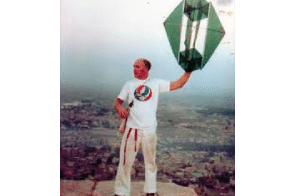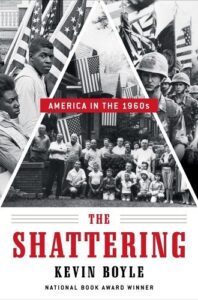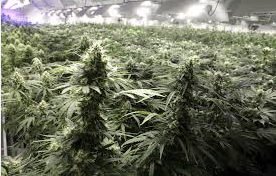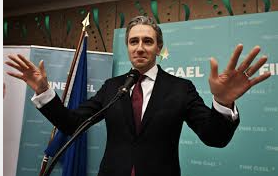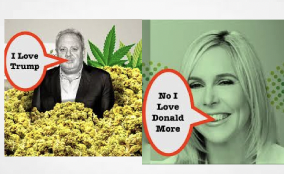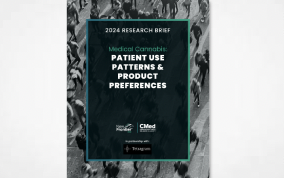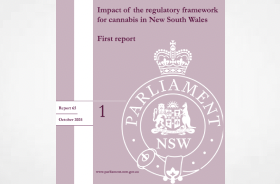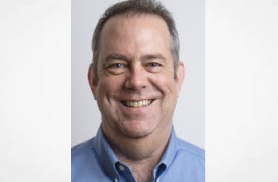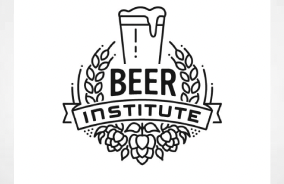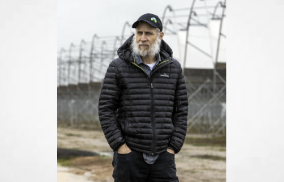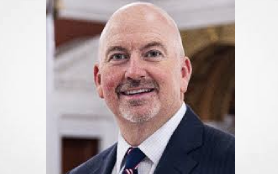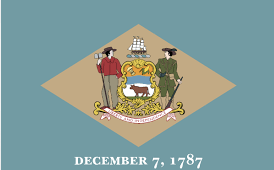Kevin Boyle on the Wild Life and Times of a Great American Iconoclast
In its popular culture, though, the United States clung to traditional standards. The nation’s most watched television show was a Western about a widowed father and his three grown sons in 1860s Nevada; the most popular movie a musical about a widowed military man in 1930s Austria, the nanny he hired straight from the convent, and the seven charming children he placed in her care, who had a remarkable ability to harmonize while dressed in the drapes.
Even rock and roll kept to the safe side. For a month in mid-1965 a new British band, the Rolling Stones, snarled its way to the top of the charts with a song steeped in the overt sexuality of the Delta blues. But the Stones were no match for the Beatles, who mounted a record-breaking tour that summer in support of their two latest albums, both packed with hits innocent enough to play at the most sheltered teenybopper’s slumber party.
Then again, maybe there was more to the Beatles than catchy choruses and incessant merchandising. That’s what Ken Kesey decided, at least, as he sat up near the rafters of San Francisco’s cavernous concert hall, the Cow Palace, on the last day of August 1965, listening to the teenyboppers scream.
Not that Kesey was a fan. There was a time when he might have liked the Beatles, back in his all-American days in suburban Springfield, Oregon, when he was wrestling for his high school team, starring in the plays, and dating the girl he’d marry a year after graduation. But that was in the early 1950s, when the Fab Four were still in knee socks and Kesey hadn’t yet decided to be a novelist.
Only after he’d finished his degree at the University of Oregon in 1957 had the idea taken hold of him. Somehow he’d managed to win a fellowship to the creative writing program at Stanford, a major coup by any standard. They’d arrived in the autumn of 1958, he and his high school sweetheart, into the rarified world of Stanford’s young sophisticates, where everyone despised pop culture’s soul-crushing banality. Had the Beatles been touring in 1958, Kesey’s new friends would have hated them.
Huxley decided that he wasn’t simply hallucinating—he was opening his mind to a level of consciousness the modern world had blocked, “a radical self-transcendence and a deeper understanding of the nature of things”
The problem was the sophisticates didn’t have a clear sense of how to break free of the mainstream. Allen Ginsberg and his acolytes had established a little colony in San Francisco’s North Beach neighborhood, an easy drive from campus. But full-fledged hipsters were a bit too avant-garde for the university set. Instead they settled for earnest talk of an artist’s responsibility to challenge the status quo, their conviction fueled by artfully prepared dinners in the peasant tradition and bottles of red wine: a tasteful rebellion, suitable for someone who one day might want tenure—until it was interrupted by Kesey’s discovery of LSD.
Lysergic acid diethylamide, the synthetic version of a chemical compound found in a fungus, causes overpowering hallucinations when ingested: “an uninterrupted stream of fantastic pictures, extraordinary shapes with intense kaleidoscopic plays of colors,” as its creator, Albert Hofmann, put it after his first LSD trip in April 1943.
In the 1950s the drug seeped into psychiatry, where it was used to treat the emotionally stunted; into psychology, where clinicians used it to study psychotic states; and into the CIA, whose operatives thought it might be used to enhance interrogation techniques.
And it secured a toehold in the literary world, thanks to British writer Aldous Huxley, who took a variant under a psychiatrist’s care in 1953. Huxley decided that he wasn’t simply hallucinating—he was opening his mind to a level of consciousness the modern world had blocked, “a radical self-transcendence and a deeper understanding of the nature of things,” as he put it in his book on the experience, The Doors of Perception.
In 1960 Kesey walked through the door too, with a little help from his friends at the CIA. The agency was secretly funding a research project on hallucinogenics at the VA hospital near the Stanford campus. The researchers needed observable subjects—needed them so badly they were offering volunteers $75 a day. So Kesey signed up.
At first it was all tightly controlled: the subjects lying in hospital beds, watching the colors cascading in front of them and the walls bending around them, while the doctors took notes. But Kesey was feeling an overwhelming sense of freedom. “We were beautiful,” he said of his first LSD trips. “Naked and helpless and sensitive as a snake after skinning, but far more human than the shining knightmare that had stood creaking in previous parade rest. We were alive and life was us.” Naturally he wanted to share the wonder. The doctors weren’t offering free samples. Not long after he started the tests, though, he got a part-time job as a night attendant on the psych ward, just for the extra income of course. There the control wasn’t tight at all.
The point wasn’t to move LSD from one lab to another but to break it out of the lab altogether, to carry it to freedom, and to let it carry its users to freedom tooSome of his Stanford clique weren’t interested in trying the capsules Kesey brought home. But there were takers enough that he soon had his own little turned-on colony, the finely crafted dinners tossed aside for vats of venison chili laced with LSD, the earnest talk replaced by technicolor visions of liberation. He was writing a new novel too, better than anything he’d written before, a riotous book set in a ward modeled on the one where he’d been spending his nights, its narrator and single triumphant character a schizophrenic Native American taken straight from a phantasm he’d seen during one of his now-regular trips. One Flew Over the Cuckoo’s Nest was published in 1962 to rapturous reviews. It was a “brilliant first novel,” gushed Time, “a roar of protest against middlebrow society’s Rules and the invisible Rulers who enforce them.”
In Cuckoo’s Nest San Francisco’s rebels saw a kindred spirit. So they started drifting down from North Beach and its even hipper offshoot around Haight and Ashbury Streets, where the art-school kids had traded the beatniks’ beloved jazz for a blast of rock and roll and their somber style for a burst of flamboyant Victoriana—young men in stiff-collared shirts and riding coats, young women in flowing velvet dresses and lace-up boots, and everybody with their hair way too long—a generational shift the older hipsters marked by calling the new kids hippies.
One by one they found their way to Kesey’s door: fabled figures like Neal Cassady, the model for the central character in Jack Kerouac’s On the Road; up-and-comers like Jerry Garcia, a wild-haired young guitarist who was trying to get a band together; aspiring writers who wanted a piece of Cuckoo’s Nest magic; and assorted hangers-on whose only goal was to be on the cutting edge of cool. Kesey was happy to have them all. So happy, in fact, that in 1963 he used the book’s royalties to buy a comfortable cabin on a secluded lot in the hills fifteen miles east of Stanford and invited anyone who wanted to come along with him. Off they went, the entire ragged clan, up to the redwoods to write and create and bend their minds whichever way they felt like going.
By then others were picking up on LSD too, so much so that authorities began to fear that they were losing control of the drug. So they tried to rein it in, not by banning it but by insisting that it be administered by professionals. In the summer of 1962 the American Medical Association issued a public warning that recreational use could lead to prolonged psychotic states. Los Angeles County sheriffs raided a church in South Gate whose pastor was supposedly tripping out his congregants. There was even a scandal at Harvard, where a young lecturer in psychology, Timothy Leary, was accused of administering the drug to subjects without a doctor’s supervision, and of using it himself.
In fact he’d done more than that. Since 1960, when he’d first taken an LSD variant, Leary had been proselytizing for the mystical power of hallucinogens, an idea he took straight from his reading of Huxley. Partly he spread the word through lectures and articles in scholarly journals; in one he suggested that public officials spike the nation’s water supply with LSD. But nothing could match the real thing. In private Leary became something of a high-end distributor, using the connections Harvard gave him to quietly offer the hallucinogenic experience to those culture brokers he thought would benefit most from the transformation of consciousness: among his most devout converts was Allen Ginsberg, whose first Leary-induced trip was so enlightening he stripped off his clothes and said that he was going to teach the world how to love.
It was one thing to turn on a hipster poet, though, another to turn on the undergrads. When Harvard officials learned in April 1963 that Leary’s closest collaborator had given a student LSD, the university fired them both. But Leary refused to surrender. Within a few months he’d convinced an heir to the Mellon family fortune to underwrite an independent institute where his work could continue unimpeded. “LSD,” Leary told the press, “is more important than Harvard.”6
Kesey couldn’t help but hear about Leary; his firing made all the papers, as did his fancy new institute. Kesey appreciated the effort, but he also had some reservations. The point wasn’t to move LSD from one lab to another but to break it out of the lab altogether, to carry it to freedom, and to let it carry its users to freedom too. That’s what people needed to see: not some pseudoscientific study but the whole freaking, mind-blowing freedom Kesey had slipped out of the psych ward. The AMA didn’t get that. Harvard didn’t get that. Even Leary didn’t get that. But Kesey’s crew did.
The first road show set off in the summer of 1964. Kesey’s second novel was to appear in July, and somebody suggested that they drive to the publisher’s New York office to celebrate. They bought an old school bus fitted out with beds and a stove, wired it for sound, carved a hole in the roof so they could climb outside whenever they wanted, and one afternoon painted the thing wild colors like the ones that flashed before them when they were tripping.
In the end it was such a howl, 20 zoned-out hipsters careening across the country on a psychedelic freedom ride, pranking the multitudes as they went: Cassady racing the bus backward through downtown Phoenix; the whole stoned crew taking a dip on the Black side of a segregated beach in Louisiana; Kesey up on the roof playing the flute for the stiffs on the streets of Manhattan; Cassady again, wheeling the bus up to one of New York’s most exclusive restaurants so its tight-assed diners could see what they were missing.
Then they were home, back among the redwoods, and it wasn’t enough to ride in a painted bus anymore. Now they painted the trees too, and sometimes their faces. They bought trunk-loads of costume-shop clothes: not the Haight’s Oscar Wilde imitation but plumes and boas, sashes and epaulets, bright green tights and tricornered hats that no one in his right mind would wear. Kesey stopped writing so he could concentrate on making a movie about their epic bus ride. But nothing happened, because making a movie wasn’t enough either. He wanted something more, something bigger, though he couldn’t say precisely what it was until the Beatles came to town to close out the summer of 1965.
Going to the concert was meant to be another prank: the famous novelist and his ultra-cool friends rolling into San Francisco already stoned, strolling into the Cow Palace in their tights and boas, floating through a sea of teenyboppers. But when the Beatles bounded on stage everything flipped around. The boppers started screaming, a piercing squeal that rose from the floor to where Kesey’s crew was sitting, high above them.
Once they got going they couldn’t stop, not even when the boys launched into their set. And then there were the lights. Not the stage lights, which were bright enough, but the flashbulbs of the girls’ Instamatics, thousands of them, bursting at random around the arena. Now some of the boppers down front were passing out and had to be carried off, and a few others were scrambling up out of the audience, security guards scrambling after them, the girls weaving and shrieking across the stage. They were tripping. That’s what he was seeing, Kesey decided: ten thousand orgiastic teenyboppers on a pop-induced trip. If the Beatles could create such a scene—the squeaky-clean Beatles—imagine what he could do.

